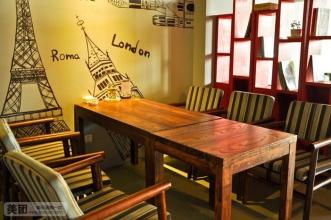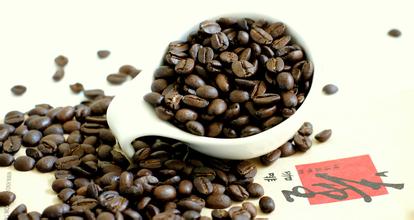Coffee bean red wine treatment bean Kaddura iron card long tail Juan coffee
Coffee bean red wine treatment bean Kaddura iron card long tail Juan coffee
The color of raw beans treated by drying is yellow, and the water content of coffee beans is generally about 11%, 12%. The advantage is that sun beans have better sweetness and mellow thickness, and less sour taste, so many coffee fans like it very much. The disadvantage is that due to the use of artificial and natural treatment methods in the process, the sun-cured beans do not look good in appearance, do not look good, the quality is unstable, and there will be greater ups and downs.
Water washing is the most popular treatment method at present, and most boutique coffee beans will choose water washing method. Washing coffee refining process: harvesting → storage tank (removal of impurities and immature beans) → pulp removal machine (removal of pulp and impurities) → fermentation tank (removal of mucous membrane attached to endocarp) → washing pool (selection of light and hard beans) → sun drying field (or dryer) → sheller (removal of endocarp) → grading (electronic bean selector or hand selection, screen, etc.) → outlet
Next, let's talk about the specific process of fermentation. First of all, Colombian farmers carefully pick coffee cherries and carefully select coffee red fruits to ensure that among the coffee cherries selected for processing, the percentage of immature cherries is less than 2%, defective beans less than 3%, and floating beans less than 5%.
Washing is the most technical way to pick up beans, and the quality of coffee is ensured through multiple sieving procedures. First move the red fruit and half-green and half-red fruit that have sunk into the sink into a large or medium-sized pulp screening machine (PulpingMachines). It is cleverly designed to mechanically press the fruit into a sieve hole, which is exactly the size of the pod (both sheepskin-wrapped coffee beans) to filter out the flesh outside the pod-using unripe fruit to be harder. Pods are not easy to squeeze out, but mature fruits are soft, and pods are easily squeezed out to ward off unripe beans and filter out the sweetest pods, so the setting of machine thrust is very important. too much force will squeeze out hard and astringent unripe beans, damaging the quality of fine beans. The general push force is set to allow 3% red fruit pods not to be squeezed into the sieve hole to ensure that all stiff green fruits are removed.
The selected coffee cherries are placed in a specific container by the farmer's uncle, which should have a device similar to a red wine fermentation suppository or a single exhaust valve. In this way, carbon dioxide can be spilled through the device to control the concentration of air in the container. At this time, the coffee cherries in the container are fermented with acetic acid, and the beans are relatively bright, clean and citric acid.
In general, the processor injects carbon dioxide into the container to prevent oxidation from producing volatile acid. this process is called lactic acid fermentation, which produces malic acid and stone acid, which is relatively stable, so the beans fermented by lactic acid are more sour, with cheese, nutty and creamy flavor.

Important Notice :
前街咖啡 FrontStreet Coffee has moved to new addredd:
FrontStreet Coffee Address: 315,Donghua East Road,GuangZhou
Tel:020 38364473
- Prev

Five methods of coffee extraction-what are the extraction methods of coffee?
There are five methods of coffee extraction-which coffee bags are portable packages for travel, which are rarely seen. Malaysians put coffee powder in cotton pockets, soak them in hot water, and then remove the cloth bags from the hot water. This kind of pocket is the same as using filter paper. This is more suitable for strong local coffee, and the coffee in the bag can be reused. Siphon type
- Next

How much is the cost of ice drop coffee? how much is a cup of ice drop coffee cold extract coffee single product coffee beans recommended
Sumatra Mantenin is rich in Sumatra, Indonesia, where the special geology and climate cultivate unique characteristics, with a very rich and mellow flavor, and with a more obvious bitter taste and carbon burning taste, bitter, sweet taste is especially good, unique charm. Indonesia is a big coffee producer.
Related
- What is the meaning of lactic acid fermentation with coffee bean treatment?
- How to judge the state of foam by sound?
- How does the latte pull out the unicorn pattern? Come to get for a little trick to improve the flower pull!
- Will flower pulling affect the taste of the latte?
- Do you know the history of coffee?
- The difference between honey treatment and sun washing what is raisin honey treatment?
- What kind of milk can a novice use to make coffee foam to keep the foam longer? The correct method and skills of milking tutorial sharing
- Why do washed coffee beans taste sour? Flavor characteristics of washed Coffee
- Introduction to the skill of how to practice the size and height of water injection around the circle of hand-brewed coffee
- How do beginners practice coffee flower drawing from scratch?

